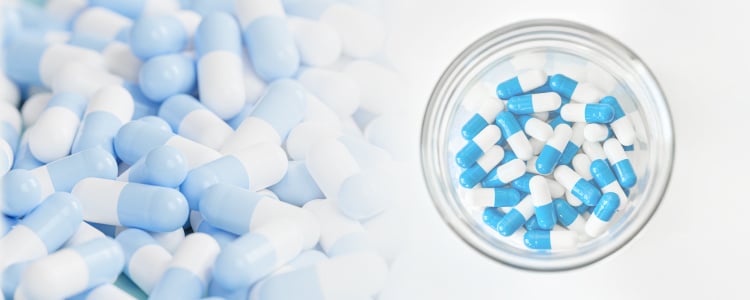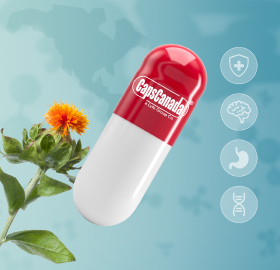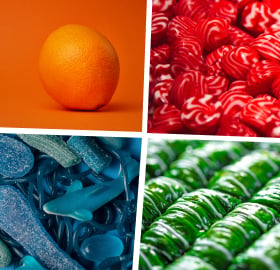There’s a lot of misinformation out there about two-piece hard capsules, which have been in widespread use around the world for over 100 years, and in the U.S. since the 1880s. Read on to find out why eight common myths and misconceptions are not correct.
Myth #1: Capsules are hard to swallow
This myth is quite perplexing, given the fact that capsules’ ease of swallowing is one of the key reasons why consumers like them so much. Especially when compared with standard tablets, capsules have very low friction properties that make them easy to swallow.
Capsules also do a great job of masking unpleasant tastes and odors, are resistant to breaking and won’t disintegrate in the mouth. It’s no wonder capsules are widely considered to be a very user- friendly oral dosage format.
Myth #2: Capsules are not vegan
The confusion here probably comes from the fact that there are two main types of capsules on the market today: gelatin capsules and HPMC capsules.
Gelatin capsules are not vegan, as gelatin is a bovine or porcine (i.e. animal-based) ingredient. However, HPMC capsules are plant-based. HPMC, which is short for hydroxypropyl methylcellulose, is a cellulose-based material that is derived from natural fibers.
CapsCanada’s K-CAPS ® line of HPMC capsules are Vegan Registered with the Vegan Society. In addition, K-CAPS ® are also Kosher and Halal certified, Non-GMO, BSE-free and free of preservatives and common allergens – perfect for meeting the dietary needs of a wide range of consumers.
Myth #3: Capsules can’t be mixed with food or drink
Actually, it is tablets that cannot be mixed with food or drink – at least not easily, as the tablet would have to be crushed into a powder first.
In contrast, capsules are composed of two interlocking pieces, the “body” and the “cap.” To mix a capsule’s contents with food or drink all you need to do is gently pull the capsule’s two pieces apart and carefully empty the contents into the desired substance.
Myth #4: Capsules require an enteric coating in order to achieve delayed release
It’s easy to see how this myth got started, because until relatively recently it was true.
To maximize efficacy of probiotics, enzymes and other formulations that are sensitive to stomach acid or moisture, these ingredients need to be delivered directly to the small intestine. In the past, achieving this desired delayed release did require adding an enteric coating to the filled capsules – a costly, time-consuming and risky process that can easily ruin a batch of filled capsules. However, CapsCanada’s
K-CAPS ® Delayed-Release Capsules have solved this problem.
K-CAPS ® Delayed-Release Capsules are naturally acid-resistant HPMC capsules in which the acid resistance is part of the capsule composition itself. This eliminates the need to add special coatings, shortens product development time and reduces manufacturing costs.
Myth #5: Capsules are filled with unnecessary fillers
While some formulations that are put into capsules do contain inactive ingredients that could be thought of as “fillers,” it is possible to encapsulate pharmaceutical or nutraceutical formulations in capsules without using any binders or other inactive ingredients at all. Whether or not fillers are truly necessary often depends on the nature of the product’s active ingredients. For example, sometimes fillers are used to make a substance easier to handle and therefore easier to insert into the capsule, or to help uniformly mix the active ingredients with each other.
Myth #6: Capsules are only for powders and granules
One of the arguments in favor of using capsules is that they are so incredibly versatile. Capsules can be successfully used with the full array of fill types. You can use capsules for powders, granules, beads and tablets. You can use them for pastes. There are capsules, such as CapsCanada’s LQ-CAPS ® , that are specifically designed for liquid fillings. You can even put multiple fill types – such as beads and tablets – into the same capsule, to combine otherwise incompatible chemicals into one capsule.
Myth #7: Capsules cannot be used with all types of APIs
Because capsules are available in both gelatin and vegetarian HPMC formats, there are capsules available that are appropriate for the full range of APIs (Active Pharmaceutical Ingredients).
- For oxygen-sensitive APIs or large-dose actives, choose gelatin capsules, such as
CapsCanada’s high-quality G-CAPS ® . - For hygroscopic, moisture-sensitive or low solubility APIs, choose vegetarian capsules, such
as K-CAPS ® . K-CAPS ® are also an excellent solution for APIs that tend to cross-link with
gelatin capsules. - For liquid fillings, LQ-CAPS ® Liquid-Fill Capsules work very well.
- For heat-sensitive drugs that cannot be made into tablets, either gelatin or HPMC capsules
can be used, with the best option depending on the nature of the API.
Myth #8: All capsules are boring
Generally speaking, capsules are not the type of product that gets consumers excited, so it’s easy to see how this myth got started. While capsules offer a full range of customization and branding options – including size, color, printing and finish – these are not things that consumers are likely to talk about to their friends and family members.
However, CapsCanada’s FLAVORED-CAPS are anything but boring! These capsules go beyond simply masking tastes and smells to making your capsule itself taste and smell good. Got a pediatric product? Imagine how excited kids will get when they discover that their pills taste like fruit, berry, grape or bubble gum. What to compete against the gummies that are so popular now with millennials and members of Gen Z? Give them a capsule that tastes like strawberry, orange, lime, coffee or mint – without gummies’ sugar, calories or formulation challenges.
Likewise, pet owners get quite excited about PET-CAPS, which are beef, bacon or chicken flavored capsules designed specifically for dogs and cats. With PET-CAPS there’s no need to attempt to hide the pill in food or a pill pocket, because the pill itself smells and tastes like foods that dogs and cats enjoy. PET-CAPS eliminate the struggle of giving pills to pets by turning medications and supplements into “treats.”
Want to learn more about capsules… including which type of capsule would be best for your formulation? The experts at CapsCanada are here for you! Contact us today at contact@capscanada.com

















